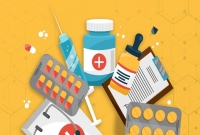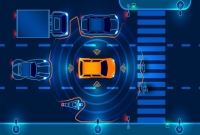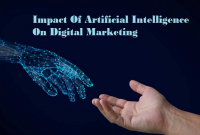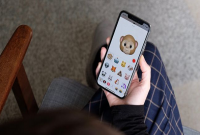
What is IoT?
- By PRIYA --
- Monday, 24 Feb, 2020
I first joined the internet community in 2003 when I bought my first house. It was a dial-up connection back then. The technology was painfully slow, but I loved it. We were much more accepting before the days of broadband and raised expectations.
Fast-forward fifteen years and I can program my central heating from a remote location with my smartphone. This is the Internet of Things (IoT)!
The emergence of the internet converted the world into a global community with a whistle and a whir. Broadband silenced the noise, speeded up connections, and allowed us to share even more data to almost all corners of the globe.
But if you think we live in an interconnected world in 2018, you ain’t seen nothing yet! IoT will take us to the next level. What is IoT?
IoT ecosystems bring together web-enabled smart devices, wireless technologies, embedded processors, sensors, communication hardware, microelectromechanical systems, and microservices, that converge into one ultra-powerful machine-generated database.
In simple terms, any data that can be transferred from an internet-enabled device or consumer application can be collected, stored and shared.
With copious amounts of raw data at hand, decision-makers should be able to find better solutions, and companies will be able to develop sharing economies that enable individuals to profit from public data.
This is exactly what MXC Foundation aspires to bring to the IoT world.
Although IoT projections mostly remain aspirations, initiatives to best utilise connected devices are underway across multiple industries. The potential to improve our quality of life is within touching distance. And for most people, it’s transferable from a smartphone or desktop computer.
The data we can collect and share will (theoretically) make socio-economic operations more efficient, deliver customer demands, enhance customer services, improve city infrastructures, reduce living costs, and improve decision making.
How is Data Transferred in an IoT Ecosystem?
What is IoT? An IoT ecosystem consists of everyday devices such as smartphones, TVs, computers and digital machines. Even animals and humans can be a “thing” in an IoT ecosystem.
Anybody that wears a pacemaker, for example, can transfer data about their health to their local hospital. This information is collected and monitored from a remote location. If your heart is approaching a critical condition, expect a call from your doctor.
Livestock is given biochip responders which inform consumers where the food you buy has come from and enables response units to trace and stem virus outbreaks quickly.
IoT devices share data through a series of sensors that are connected to gateways and sent to a central database. An example of how IoT may work in the home is the wireless-enabled smart-fridgethat lets you know when you’re out of milk.
Small things. But when this type of minute detail is made available to companies and local councils, there are larger private and public benefits.
Other noticeable benefits of IoT will be traffic analysis, energy networks, real estate locations, information around water pressure, crop farming, public transport and many other platforms of the industry can collect valuable data to help make decisions that will resolve 21st Century problems.
Upgrading 20th Century infrastructure
Before we can tackle 21st Century issues, there is a pressing need to replace 20th Century infrastructures with 21st century technology that can cope with the demands huge transfers of data will require.
We currently have three types of network that can transfer data to a central application; MQTT, HTTP and CoAP. Herein lies two problems. A central database is not compatible with all three standard protocols, nor can the servers cope with data transfers from millions of sources.
- You will know this from experience. If you have worked in an office with a dedicated server or used a broadband connection at peak times, you will probably have experienced system crashes and slow download speeds.
- Technologies in the current infrastructure were designed for low bandwidth conditions. They cannot even cope with the average amount of traffic. So imagine how they would perform if millions of devices are connected.
- The reality is they wouldn’t be able to perform at all.
IoT ecosystems cannot transfer huge amounts of data either, but they are being designed to manage scalability in a secure environment. The more devices that are connected to the network, the abler they are to cope with the high-scale consumption demands.
In an IoT world, data is predominantly time-sensitive. If the information is not transferred in real-time for each device, the right time-stamp for sorting and alignment will not be verified instantly.
Historical data can be transferred, and whilst this will be sufficient in some scenarios, time delays will cause errors and awkward moments in the real world.
Imagine holding up the supermarket queue because your bank network is too congested to run through your security checks. You could be standing red-faced for several minutes. That’s awkward.
Fortunately, there is a solution: Low Power Wide Area Network.
LPWAN will power IoT
Before IoT will work effectively, the ecosystem has to have a network that can handle huge quantities of data over a wide area without incurring jaw-dropping costs.
The current infrastructure used by telecommunication companies today is insufficient. Antennas and satellites are very expensive to build, maintain and operate.
LPWAN is the fuel that will power interconnectivity. These networks use less power so is not a burden on batteries. One charge can last an LPWAN sensor for up to ten years.
Another premium advantage of LPWAN is that they are more environmentally and economically friendly than telecom towers.
The power usage on the average 4G network uses between 2-6kW per tower. Some LPWAN gateways don’t use anywhere near that amount; 12.95 W at most.
LPWAN is already being used in key industry sectors such as healthcare, transportation, utility, and energy. BI Intelligence estimates the total number of IoT devices connected by LPWANs will surpass 700 million by 2021.
There is little doubt that LPWAN can resolve the 21st Century problems we are facing. But how many telecommunications companies will adopt a low-cost solution?
Their answer is to introduce Narrowband (NB-IOT) technology, but end-users still rely on these companies to provide a service and maintenance. So why would you want to use a service that is reliant on a company when you can use an unlicensed LoRAWAN that is open to everyone.
It’s time the general public started looking towards tech start-ups that will provide low-cost solutions.
That is exactly what MXC Foundation is hoping to achieve. To provide a public service that is available to everyone at low cost and not dominated by the telecommunications monopoly.
MXC is working on the MXProtocol with a view to developing an LPWAN ecosystem that reduces the cost of utilities and other services. Within this ecosystem, everyday users have the opportunity to earn revenue by sharing public data via shared economy initiatives.
For example, do you have a thermostat or barometer measuring the weather and temperature? Then why not sell this data to weather stations via an app?
The data-chain will, of course, be pulled together by the blockchain, a decentralised and secure public ledger that can store massive amounts of data that cannot be corrupted or hacked.
MXProtocol and IoT
With the MXProtocol, the shared economy will be measured by an LPWAN gateway that functions as a node to collects data from individual sensors and sends it to servers.
LPWAN gateways are publicly owned and moderated by users in the same way as permissionless blockchains. There is no single entity that owns the network. Instead, individuals create a network and provide data as a service – for which they are financially compensated.
The potential for IoT to make your life easier and reduce the cost of living is not far from becoming a part of everyday life. You can’t expect to make a living from transferring data, but you will at least have a little more spare change in your digital wallet to play with.






